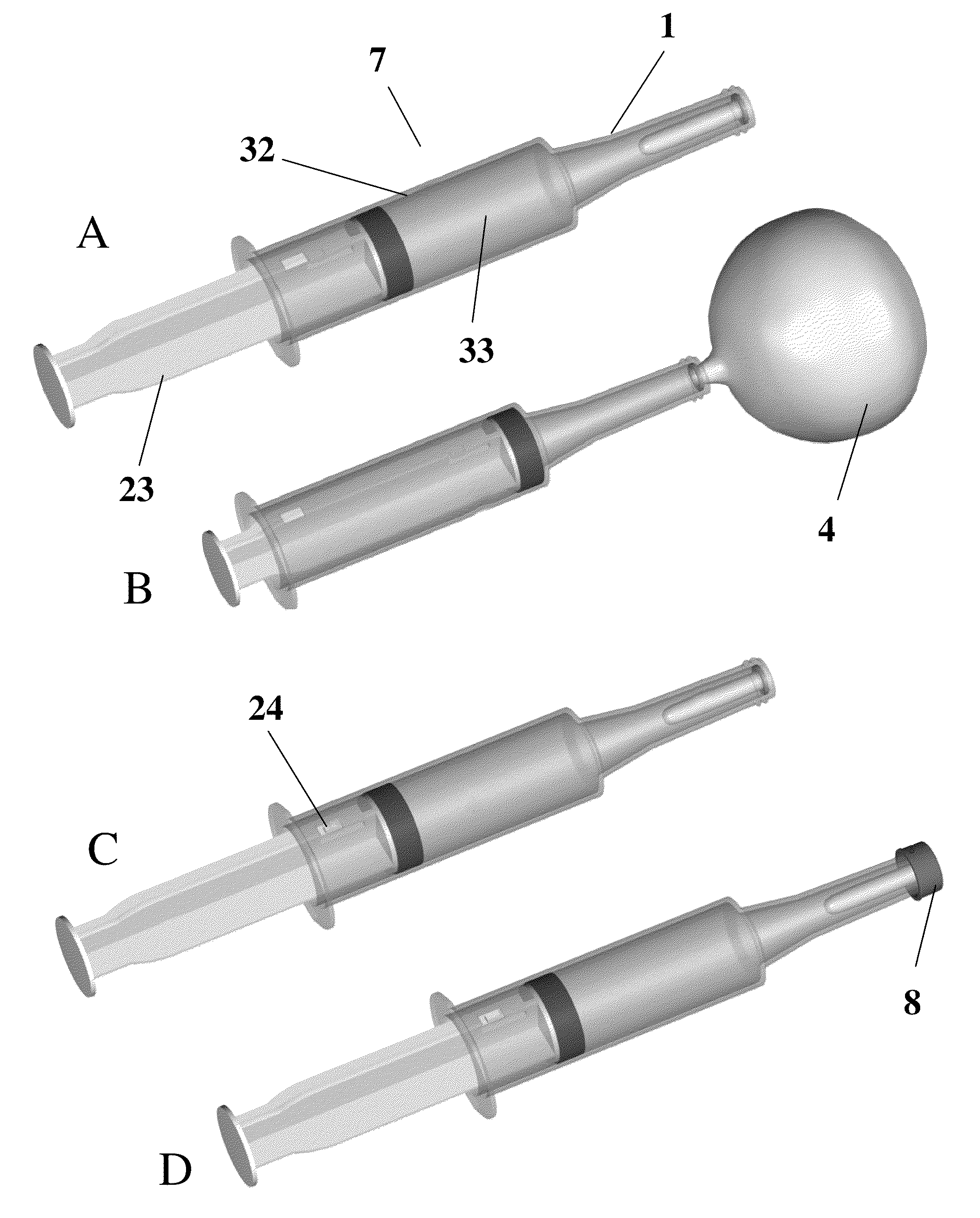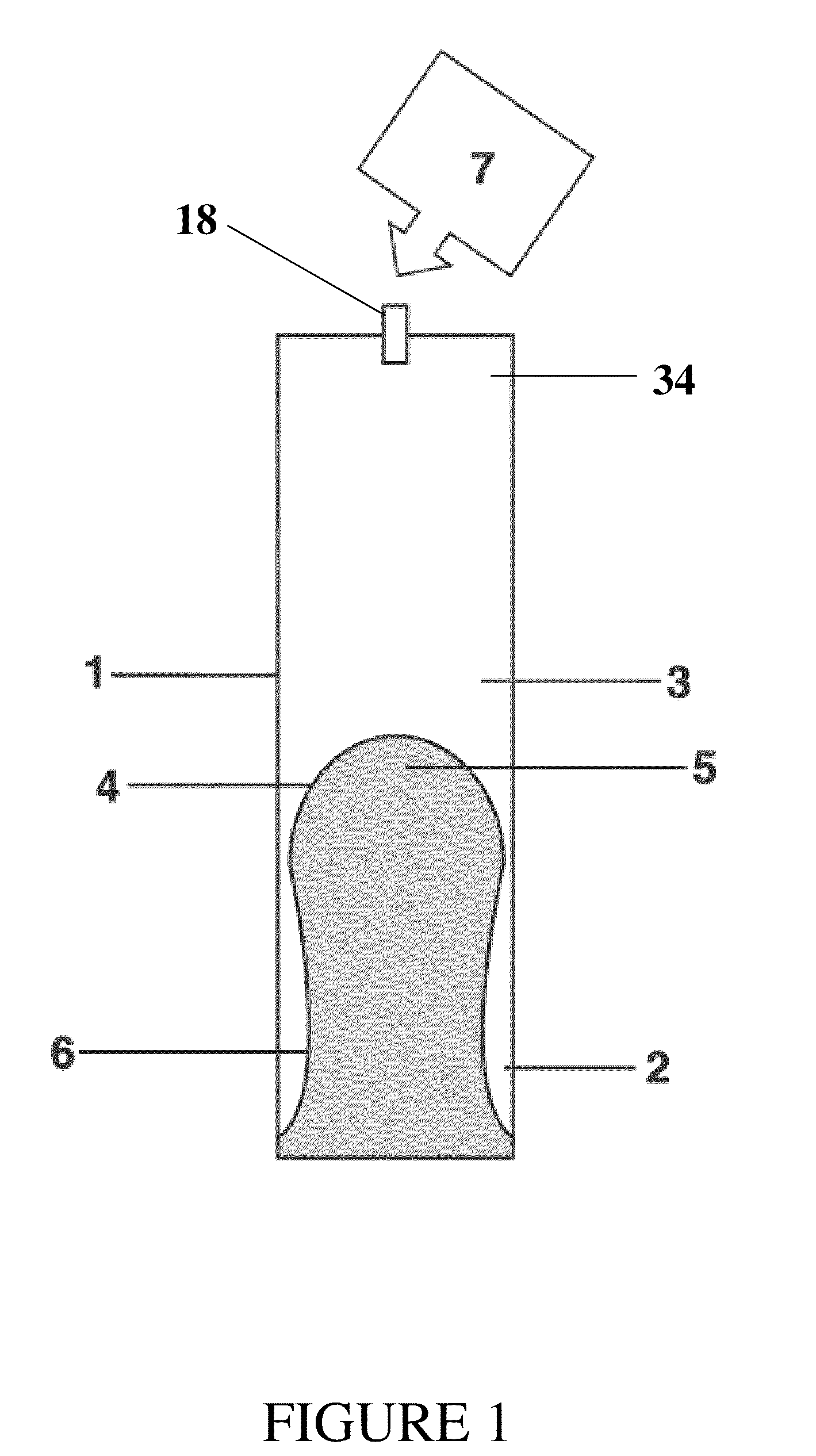Method of Detecting Colorectal Cancer
a colorectal cancer and detection method technology, applied in medical science, vaccination/ovulation diagnostics, surgery, etc., can solve the problems of large variability of stool size and consistency, difficult standardization, etc., and achieve the effect of improving the accuracy of screening by any of these methods
- Summary
- Abstract
- Description
- Claims
- Application Information
AI Technical Summary
Benefits of technology
Problems solved by technology
Method used
Image
Examples
Embodiment Construction
[0043]Description and Use of the Cell Sampling Apparatus
[0044]The cell sampling device of FIG. 1 is designed for insertion into a rectal cavity. The device comprises a substantially cylindrical insertion member 1 with an interior cavity 3, closed at the distal insertion end 2 by a flexible and resilient membrane 4 which is sealingly attached to the member 1 at the distal end 2. In the position shown in FIG. 1, the membrane 4 is held within the cavity 3, and is adapted to emit from the cavity 3 when the cavity 3 is pressurised by means 7 (shown in more detail in FIG. 2). The membrane 4 has a cell sampling surface 5 which in the rest position shown in FIG. 1 is the inner surface, but when the membrane emits is the outer surface, and an opposing surface 6 which in the rest position is the outer surface, but which becomes the inner surface when the membrane emits. The membrane may be made of nitrile, latex or a rubber based substance. At the proximal end 34, the cavity 3 is closed by a ...
PUM
| Property | Measurement | Unit |
|---|---|---|
| Fraction | aaaaa | aaaaa |
| Wavelength | aaaaa | aaaaa |
| Concentration | aaaaa | aaaaa |
Abstract
Description
Claims
Application Information
 Login to View More
Login to View More - R&D
- Intellectual Property
- Life Sciences
- Materials
- Tech Scout
- Unparalleled Data Quality
- Higher Quality Content
- 60% Fewer Hallucinations
Browse by: Latest US Patents, China's latest patents, Technical Efficacy Thesaurus, Application Domain, Technology Topic, Popular Technical Reports.
© 2025 PatSnap. All rights reserved.Legal|Privacy policy|Modern Slavery Act Transparency Statement|Sitemap|About US| Contact US: help@patsnap.com



